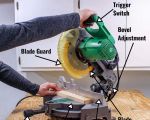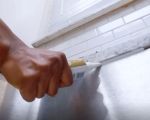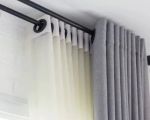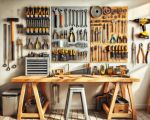Best Tools for Repairing Furniture Joints
Repairing furniture joints is a task that every DIY enthusiast or professional woodworker encounters at some point. Whether your antique chair has a wobbly leg, or your dining table's corner joint has loosened, the right tools can make all the difference. In this guide, I’ll walk you through the best tools for repairing furniture joints, giving you the knowledge you need to restore your furniture to its former glory.
1. Wood Glue: The Unsung Hero
When it comes to repairing furniture joints, wood glue is one of the most essential tools you'll need. It's often the first choice for simple joint repairs, such as fixing loose dovetails or reinforcing weakened butt joints. The beauty of wood glue is that it penetrates deep into the wood fibers, creating a strong bond once it dries.
Some popular options for wood glue include Titebond III and Gorilla Wood Glue. Both of these are known for their strength and reliability, especially when working on furniture joints that bear weight. To use wood glue effectively, ensure the surfaces you are bonding are clean and smooth. Apply a thin, even layer to both surfaces, clamp the pieces together, and let the glue cure for the recommended time. For the best results, avoid over-tightening the clamps to prevent squeezing out too much glue.
2. Wood Clamps: Essential for a Tight Bond
Once you've applied wood glue, you’ll need a reliable set of wood clamps to hold the joint together while it dries. The key to a successful bond is maintaining consistent pressure on the joint during the curing process. Wood clamps are designed to apply even pressure and prevent the joint from shifting or misaligning.
There are several types of clamps you can use, such as C-clamps, bar clamps, and pipe clamps. Bar clamps are particularly popular for furniture repairs because they offer adjustable width and are easy to apply to a variety of joint types. Make sure to check the clamp’s size and strength before use. For larger furniture repairs, pipe clamps offer greater reach and pressure.
3. Doweling Jigs: For a Stronger, More Precise Joint
If you’re dealing with a loose or broken joint and need to add some extra strength, doweling is an excellent method. Doweling involves inserting cylindrical wood pins into matching holes to create a stronger bond. Doweling jigs are essential tools for this task as they allow you to drill precise, evenly spaced holes for the dowels.
For perfect results, I recommend using the Kreg Jig or the Wolfcraft Doweling Jigs, both of which are highly rated for ease of use and precision. These jigs ensure that your dowels are aligned correctly, which is crucial for maintaining the strength of the joint. After drilling the holes, insert the dowels with wood glue and clamp the pieces together. This method works well for joints like corner joints, edge joints, or even reinforcing weakened butt joints.
4. Biscuit Joiners: A Faster, Less Intrusive Alternative
If you're looking for a quicker and less intrusive method to strengthen joints, consider using a biscuit joiner. This tool allows you to cut small, oval-shaped slots into the wood, into which you insert a wooden biscuit coated with glue. Once the biscuit is inserted, the glue expands, forming a strong bond between the pieces.
Biscuit joiners are great for repairs in which the joint is too small or delicate for dowels but still requires reinforcement. Popular biscuit joiners include the Makita 3709 and the Porter-Cable 557. They are easy to use and provide a clean, quick solution for most furniture joints. This method is commonly used for edge joining tabletops and reinforcing butt joints, especially for plywood or MDF furniture.
5. Mallet: A Gentle Tool for Perfect Alignment
When working on delicate repairs, it’s essential to avoid damaging the wood. A wooden or rubber mallet is your best friend here. Unlike a regular hammer, which can dent and crack the wood, a mallet provides a softer impact that ensures the joint stays intact. It’s ideal for tapping pieces into alignment without causing damage.
A good mallet is an essential tool when working with other tools like dowels, biscuits, or clamps. You’ll need it to gently tap joints together or adjust the alignment of the pieces during the clamping process. Wooden mallets are available in a variety of weights, so choose one that feels comfortable and suited to the scale of your repair job.
6. Wood Filler: For Minor Gaps and Imperfections
In many cases, when repairing furniture joints, you might encounter minor gaps or cracks that need filling. While wood glue and clamps can fix most joints, wood filler is your go-to product for filling in small holes or cracks that appear around the joint area. It’s also ideal for cosmetic repairs on wood surfaces, ensuring that everything looks neat and professional.
To use wood filler, apply it with a putty knife or scraper, filling the gap completely. Once it dries, sand it down to match the surface of the wood. Some of the best wood fillers include Elmer’s Carpenter’s Wood Filler and Minwax Wood Filler. These fillers are easy to use, sandable, and available in a variety of colors to match different wood finishes.
7. Screwdriver and Drill: For Reinforcing Joints
While many furniture repairs can be done with glue and clamps, there are times when a mechanical fastener, such as screws, is necessary to reinforce the joint. A good quality screwdriver or drill is indispensable when working with wood joints that require additional strength. Whether you’re working on a loose chair leg or a cabinet corner, screws provide a simple but effective method for securing joints long-term.
When using screws, always pre-drill pilot holes to prevent the wood from splitting. For furniture repairs, choose wood screws that are long enough to penetrate both pieces of wood without going through the surface. A cordless drill with a set of bit sizes will be especially helpful, as it allows for easy driving of screws with minimal effort.
Choosing the right tools for repairing furniture joints is essential for achieving lasting, professional results. By using the tools mentioned above, such as wood glue, clamps, doweling jigs, biscuit joiners, mallets, wood fillers, and screwdrivers, you’ll be able to handle a wide variety of furniture repair projects. Whether you're an experienced woodworker or just getting started with DIY repairs, having these tools on hand will make your projects more successful and enjoyable.
<> SEO Title: Best Tools for Repairing Furniture Joints SEO Keywords: tools for furniture repairs, best tools for fixing joints, furniture joint repair tools, wood repair tools, DIY furniture repairs SEO Description: Learn about the best tools for repairing furniture joints, including wood glue, clamps, doweling jigs, and more. These tools will help you achieve strong, lasting furniture repairs.








